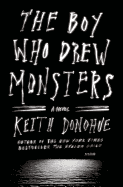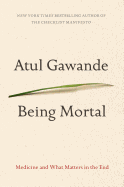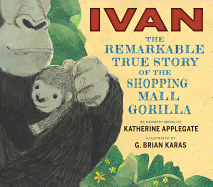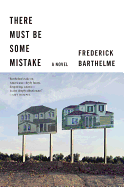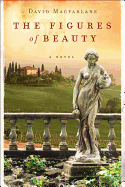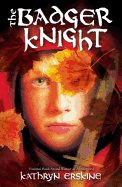Friday, October 10, 2014
When my husband and I got married, he had little to no opinion about the wedding planning. There were two items on which he wouldn't budge, however, both related to Star Wars: the wedding cake topper (Han and Leia) and the music that played as we entered the reception (Main Theme). Since then, we've amassed quite the collection of Star Wars goodies, including a mass of books that resides between some awesome Star Wars bookends:
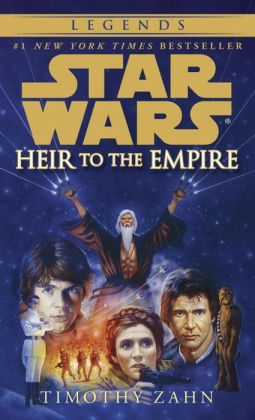
William Shakespeare's Star Wars by Ian Doescher: Less serious, but still just as much fun, are the myriad books that riff on the Star Wars theme: Doescher's novel presents the story of Episode IV in iambic pentameter; follow-up titles (The Empire Striketh Back and The Jedi Doth Return) move through the original trilogy in the style of the Bard.
How Star Wars Conquered the Universe by Chris Taylor (see our interview below) is the most recent addition to our shelves, and one that should quickly find its way into the hands of any fan at any level, from the newest Star Wars lover to a card-carrying member of the 501st Legion. Taylor's account is packed with trivia, history and anecdotes about Star Wars and how it has been shaped by its immense body of fans. Perfect while we wait with bated breath to see what Episode VII will deliver. --Kerry McHugh, blogger at Entomology of a Bookworm
There Must Be Some Mistake
by Frederick Barthelme
When Wallace Webster is eased out of his partnership at a Houston design firm, he's at an awkward age--too young to pack it in, too old to start over. His response is to retreat to his condominium in a "spectacularly kitschy" Gulf Coast town. The nearly constant presence of attractive women in his life--from his platonic relationship with Jilly, a coworker only slightly older than his daughter, to his fitful affair with Chantal White, a sexy restaurant owner with a dark past--somehow fails to brighten his mood.
Life at Forgetful Bay Condominiums is anything but placid. One resident dies in a car crash, and Chantal is tied up by an intruder who covers her with blue paint. That's only in the novel's first 15 pages, before the mass mailbox thefts, the nude dancer in the driveway of the homeowners' association president and a suicide. One can only imagine the residents' dismay at what a character calls an "appalling parade of unlikely events." The bizarre happenings at the sleepy condos highlight the disconnection from neighbors that's become one of the defining characteristics of modern life. More than that, Frederick Barthelme (Waveland) suggests, is how unknowable, and truly strange, the lives of others often are.
Even as Wallace leads a life that can be described only as adrift, he never wanders off onto irony's seductive path. There Must Be Some Mistake might have foundered in a sea of cynicism, but in the end Barthelme manages to salvage something that looks suspiciously like a glimmer of hope. --Harvey Freedenberg, attorney and freelance reviewer
Discover: A wry look at contemporary America through bizarre events and characters at a Texas Gulf Coast condominium.
The Figures of Beauty
by David MacFarlane
For centuries, Carrara marble has been associated with opulence and beauty. Quarried from the mountains of northwest Italy, it is the raw material of the world's finest architecture and sculpture. "Michelangelo's mountains" are at the center of The Figures of Beauty, David Macfarlane's ambitious novel of fateful connections--and missed connections--across continents, classes and generations. It is primarily the story of Italian sculptor Anna Di Castello and Oliver Hughson, the adopted son of Canadian schoolteachers. Oliver, a young, Rilke-reading, straight-laced man from small-town Ontario, falls for Anna, an older Italian artist who smokes a spliff with her morning coffee, swears like a stone cutter and enjoys lusty mountainside sex. After four months of bliss, the cautious Oliver returns to Canada, leaving behind Anna--and, to his later surprise, a daughter.
Giller Prize finalist Macfarlane (Summer Gone) is interested in much more than a coming-of-age romance in Tuscany, however. Narrated by Oliver and Anna's child, The Figures of Beauty traces the history of Carrara marble and the dangers of its mining; the challenges faced by artists like Michelangelo who attempt to chisel delicate curves from the hard, white stone; the provincial limitations of rural Canada; and the basic human need to connect with family and community. Nonetheless, it is the brief romance that drives the narrative. As Oliver writes to his newfound daughter, "I only made one serious mistake in my life…it is up to all of us to know what we most love... youth is no excuse for turning away from it...we cannot always be reasonable." --Bruce Jacobs, founding partner Watermark Books & Cafe, Wichita, Kansas.
Discover: A multi-generational, intercontinental story of love, art, fate and Carrara marble.
The Devil's Tub: Collected Stories
by Edward Hoagland
Acclaimed nature writer, essayist and novelist (Children Are Diamonds) Edward Hoagland has also written some fine short stories. Thanks to The Devil's Tub, readers can now enjoy 10 specimens of his short fiction previously left languishing (some for more than 50 years) in the back issues of such magazines as the New Yorker and Esquire.
Prior to attending college, Hoagland worked at a circus for two summers, and three of these tales draw on those years; the best of them shares its title with the collection. The "devil's tub" (or Wall of Death) was known to attendees of fairs and carnivals of yore as a rickety, cylindrical wooden "tub" that motorcyclists nosily and speedily circumnavigated. Jake "Pappy" Thibodeau "occupied the saddle of a cycle as another man might loaf in an easy chair." Now in his 50s and weary from years of risking his life, his trip is winding down. It's a poignant, tour-de-force portrait of a man, his family and the world of sideshows and carnies.
"Circus Dawn" also captures carnival life as it tells the story of Chief and Fiddler, caretakers of the big cats. Animals feature prominently in Hoagland's stories beyond the big top as well. In "The Final Fate of the Alligators," Arnie Bush kept a pet alligator in his New York City apartment, but it has outgrown the bathtub. Now what? From a lonely man looking for love at Coney Island to a man who hides from a grizzly bear in a beaver's dam, "desperate as a hooked fish," Hoagland's characters are always sympathetic, decent people, memorably drawn. --Tom Lavoie, former publisher
Discover: The beauty and elegance of a popular writer's little-known short stories.
Mystery & Thriller
The Boy Who Drew Monsters
by Keith Donohue
Jack Peter Keenan has always been an odd boy. Even before the accident three years ago, he was not exactly normal. Now almost 11 years old, he doesn't go outside, ever. As Christmas approaches, there are strange happenings afoot: things that go bump in the night, apparitions in the snowy roadway, screams of people who aren't there. Jack has begun drawing monsters. His parents, Holly and Tim, are increasingly worried.
Holly renews her relationship with the church; when she seeks answers, the local priest and his Japanese housekeeper pelt her with tales of shipwrecks and spirits. Tim resolves to work harder with his son. The parents of Jack's one friend, Nick, take off for the holiday, leaving him to stay with the Keenans in their remote Maine beachside home, in the snow and bitter cold. As Jack's drawings multiply and the howls outside grow louder, readers will wonder if he's withdrawing, abandoning reality (and pulling Nick and the Keenans along with him), or if somehow his interior landscape is populating the outside world.
Multiple mysteries enliven the terror of The Boy Who Drew Monsters, which becomes ever more disturbing as the source of danger comes gradually into focus. In his sensitive, incisive treatment of Jack's behavior and its effect on his family, Keith Donohue (The Stolen Child) explores the challenges of mental disorders, but suspense and a bright thread of terror evoke the very best of the horror genre. Just as a Maine winter chills the bones, this singular little boy provides a satisfyingly frightening story. --Julia Jenkins, librarian and blogger at pagesofjulia
Discover: A terrifying, enigmatic and ever-accelerating story about the power of imagination.
Biography & Memoir
Facing the Music: My Story
by Jennifer Knapp
In 1999, a rowdy college student from Kansas burst onto the contemporary Christian music scene to win Nashville's prestigious Dove Award for New Artist of the Year. Jennifer Knapp's guitar rock grafted into the growing renaissance of gospel music, offering an alternative to mainstream music for Evangelical youth. After three more years and two more albums, however, a burnt-out Knapp--decorated with chart-toppers, Dove Awards and Grammy nominations but frustrated by moralism and hypocrisy--walked away from the business with a firestorm of speculation burning behind her.
Facing the Music is Knapp's introspective, touching account of her volatile upbringing, self-destructive youth, humble Christian conversion and runaway stardom. She elaborates on her musical hiatus, reconciliation with her sexuality and her very public coming-out as a lesbian. While unabashedly honest, Knapp offers past antagonists grace by focusing more on her own internal struggles. Few names are dropped; one standout, however, is Katy Hudson, a young musician Knapp mentored while they toured together. (She goes by Katy Perry now.)
Knapp stays the swirl of gossip that has plagued her career without being vituperative. Her 2010 comeback album, Letting Go, added a new dimension to her work: she began presenting Inside Out Faith, events meant to establish room for LGBT people of faith to tell their stories. Whether her music is a touchstone for the reader or not, her journey is one of hope, resilience, passion and faith. Much may have changed since she entered the limelight, but Knapp powerfully expresses the importance of standing for what you believe. --Dave Wheeler, publishing assistant, Shelf Awareness
Discover: Recording artist Jennifer Knapp's candid reflections on her Christian faith, prominent career and coming out of the closet.
Health & Medicine
Being Mortal: Medicine and What Matters in the End
by Atul Gawande
Being Mortal, from Boston surgeon Atul Gawande (The Checklist Manifesto), displays the precision of his surgical craft and the compassion of a humanist in a frank and often emotionally powerful examination of the burden of mortality.
In this multifaceted study, Gawande aims to help both doctors and patients "figure out how to face mortality and preserve the fiber of a meaningful life." It troubles him that medical training and rapidly improving technologies often frustrate those goals, resulting in care that "fails the people it is supposed to help." Most crucially, he points out, physicians need to do more to equip elderly and terminally ill patients to make difficult decisions about their own course of treatment.
Though Being Mortal is a persuasive work of medical journalism, it takes an intensely personal turn when Gawande describes in painstaking detail the final illness and death of his father from a spinal-cord tumor. In a narrative that often attains the force and beauty of a novel, he explains the myriad choices that helped the family shape his father's path, not to a "good death," but instead to the end of a well-lived life, as in each of his father's last days he "found moments worth living for."
Only a precious few books have the power to open our eyes while they move us to tears. Atul Gawande has produced such a work. One hopes it is the spark that ignites some revolutionary changes in a field of medicine that ultimately touches each of us. --Harvey Freedenberg, attorney and freelance reviewer
Discover: A surgeon's passionate argument for rethinking the common approach to treatment of the elderly and terminally ill.
Conscious Living, Conscious Aging: Embrace & Savor Your Next Chapter
by Ron Pevny
Every day, 10,000 baby boomers turn 65. In Conscious Living, Conscious Aging, Ron Pevny provides concrete ways to make retirement an even more meaningful time than the years that came before, persuading readers that fulfilling emotional and spiritual needs is as important as tending to physical and financial security.
During his 50s, several events turned Pevny's focus toward "conscious aging," especially a request to create a program to help with the rite of passage into "sage-hood" and a heart arrhythmia caused by a tumor in his lung. The health crisis provided a sense of urgency and led him to found the Center for Conscious Eldering in Durango, Colo.
Pevny believes aging can accentuate the best or the worst in an individual, and aims to help readers clarify their purpose in order to live with intention rather than simply out of habit. Throughout, Pevny draws on well-established archetypes from Joseph Campbell and Carl Jung, and each chapter focuses on a different way of starting this journey: experiencing nature, resolving regrets, asking for and accepting forgiveness, releasing the past, building a legacy and so on. At the end of each chapter, Pevny includes a "Story by the Fire," highlighting how a person successfully navigated the transition to retirement. In addition, concrete exercises and recommended resources guide readers to continue down the path begun with this book, which Pevny proposes is "not another academic work. Instead, I hope to offer you a guidebook to support your journey toward conscious elderhood." --Kristen Galles from Book Club Classics
Discover: Why the sunset years may be the most rewarding yet.
Sports
Older, Faster, Stronger: What Women Runners Can Teach Us All About Living Younger, Longer
by Margaret Webb
Margaret Webb (Apples to Oysters) was a successful young athlete and an active adult, but never suspected she might be a marathoner. Staring down her 50th birthday, she became curious about what she could accomplish. She knew there were competitive women runners several decades her senior; could she join their ranks? Older, Faster, Stronger covers what Webb calls her "super-fit year." And as her subtitle states, the lessons she shares are valuable for men and women of all ages, in any sport.
With the luxury of being able to devote her time and energy primarily to training, Webb engages expert nutritionists, personal trainers, coaches, sports psychologists, aging specialists, physiologists and laboratory researchers. She has her maximal oxygen consumption tested (twice); adds cross-training, gym time and track workouts to her running schedule; travels; and brunches with world champion septua-, octo- and nonagenarian women. She sets goals: to qualify for the Boston Marathon under the fastest women's standard (the qualifying time for 18-to-34-year-old women) and to be competitive in the half-marathon at the World Masters Games.
Webb is meticulous in applying her results stringently to her own life and documenting them for her readers. Her research appears thorough, although the more fastidious reader may be frustrated by the absence of citations. Older, Faster, Stronger is packed with statistics and studies, but is well explained, so the reader will find the science easily digestible. Athletes of any sex, age and discipline can benefit from--and be entertained by--Webb's approachable investigation of becoming faster and stronger into advance age. --Julia Jenkins, librarian and blogger at pagesofjulia
Discover: An amiable and instructive memoir about achieving and maintaining competitive fitness at any age.
Pets
Miracle Dogs: Rescue Stories
by Liz Stavrinides
Miracle Dogs, which combines Liz Stavrinides's professional career as a photographer with her personal passion for animals, is a testament to the healing powers of canine companionship for both dog and human--and the perfect gift for any dog lover. Stavrinides shares the stories of 50 families who rescued dogs from shelters, the streets, the sea and even the AKC show world, including celebrity pet owners like Chevy Chase and his golden Labradors, Chris and Cody; Hoda Kotb and her cockapoo, Blake Charlie; Jamie-Lynn Sigler and her Havanese/terrier mix, Bean; and Lance Bass and his Australian shepherd/beagle mixes, Lily, Foster and Dingo. But the majority of the entries are about people who are stars only in the eyes of their pups.
Most of the stories are unequivocally positive, but some of the striking ones involve dogs with special needs who required incredible dedication to heal, like Jax, a spaniel/dachshund mix that needed spinal surgery and now runs four miles a day with the help of cart, or Princess Fiona, a poodle mix that required a lens implant in order to see. Anyone who has experienced the world of animal rescue knows that while this vocation reinforces how resilient, forgiving and extraordinary dogs are, at times our regard of humanity drops precipitously. However, Miracle Dogs is not only a celebration of the goodness of canines, but a reminder of the many kind-hearted people in the world, too. A box of tissues is mandatory while reading Miracle Dogs, but the tears are nearly always happy. --Kristen Galles from Book Club Classics
Discover: Why more and more dog lovers are turning away from pet stores and breeders and embracing the rewarding world of animal rescue.
Art & Photography
Pen & Ink: Tattoos and the Stories Behind Them
by Wendy MacNaughton and Isaac Fitzgerald
Tattoos themselves, whether the art is visible or not, are commonplace enough, but we seldom hear the stories that inspired them. For Pen & Ink, Isaac Fitzgerald, BuzzFeed Books editor and co-owner of The Rumpus, collaborated with illustrator Wendy MacNaughton to give us exactly what we wonder about every time we see a stranger's interesting body art.
That isn't to say everyone in here is a stranger: there are literary marvels Cheryl Strayed and Roxane Gay, former gang leader Raymond "Shrimp Boy" Chow, illustrator Carson Ellis and more. The tattoos and their stories are as often delightful as they are heartrending. Most succinct is the text from warehouse manager Siobhan Barry, whose toes read pizza party. "I really f*cking love pizza," she explains. Other stories are much more involved. Writer and public speaker Mona Eltahawy had Sekhmet, Egyptian goddess of retribution and sex, tattooed on her wrist after her capture and violent interrogation while on assignment in Egypt, "to both celebrate my survival and make a mark on my body of my own choosing."
Beautifully illustrated, Pen & Ink pairs stories with 4-color drawn facsimiles of the tattoos. It is more than a keepsake for tattoo enthusiasts; it is an artifact of diverse, deeply human histories, like the cave paintings of Lascaux or an illuminated manuscript, a compilation of intimate knowledge we can only hope to see continued in the future. --Dave Wheeler, publishing assistant, Shelf Awareness
Discover: A fully illustrated collection of rad tattoos and the stunning stories that inspired them.
Children's & Young Adult
Ivan: The Remarkable True Story of the Shopping Mall Gorilla
by Katherine Applegate, illus. by G. Brian Karas
This charming and moving picture book tells the real story of the gorilla that captivated readers in the Newbery-winning The One and Only Ivan.
Katherine Applegate's text reads like poetry: "In leafy calm, in gentle arms, a gorilla's life began." Brian Karas (Tap Tap Boom Boom) shows an expressive young gorilla, with his mother holding him close. In a haunting spread, readers look up through trees in Central Africa that nearly block out the sky, and an airplane travels through a small opening in their leafy circle: "He did not learn about humans until it was too late." The artist places readers inside a dark crate with Ivan, with only cracks of sunlight, and at his exit in an urban area with smoke spewing from a nearby factory. The humans dress Ivan and his baby gorilla companion like children, and feed them ice cream. But soon Ivan outgrows his childlike qualities--and size: "A cage in the mall became Ivan's new home" for 27 years. A 13-year-old Ivan stands, looking out at a human father and his two children. "In the jungle, he would have been ready to protect his family," writes Applegate, "But he had no family to protect." It is perhaps the most poignant moment in the book.
Applegate's spare text gives readers just enough grounding to follow Ivan's journey, while Karas's artwork fills in Ivan's emotional life through the gorilla's engaged expressions and body language--no image more triumphant than Ivan's release into Zoo Atlanta. A heartfelt tribute to a magnificent animal. --Jennifer M. Brown, children's editor, Shelf Awareness
Discover: The story of the Newbery-winning The One and Only Ivan for a picture book audience.
The Badger Knight
by Kathryn Erskine
National Book Award–winner Katheryn Erskine (Mockingbird) again displays her skill at telling a story through a narrator's particular perspective.
In his first-person account, Adrian explains that he's nicknamed "the Badger" because of his pale, ghostlike appearance and tendency to smudge his eyes to cut the glare from his light skin. At 12, he is small and sickly, and generally not well regarded in his village: "A few people say being tiny and white as an angel is a good omen, but far more say I'm evil." Readers will recognize his dream of becoming an archer and famous knight as unrealistic. Invading Scots threaten the lives of those in 1346 England. War entices Badger with thoughts of escaping the farm and becoming a hero, but when he follows his best friend, Hugh, to battle, he learns peril is not reserved for the battlefield alone: his journey is fraught with more danger and adventure than he'd imagined possible. Badger discovers a world in which truth is not black or white, but instead rather like his smudged face: "I think of what I always believed to be truths... and how all these 'truths' aren't real at all."
Adrian compensates for his feelings of insecurity with his Badger persona, which gives him strength. His story remains the journey of all children who struggle to find their place in the world. The vocabulary-dense historical setting may be challenging for new chapter book readers, but those willing to use the book's glossary will be rewarded with a rich medieval tale. --Jessica Bushore, former public librarian and freelance writer
Discover: A boy journeys across England to battle the Scots in an adventure-filled 14th-century tale of redemption and friendship.
The Farmer and the Clown
by Marla Frazee
Marla Frazee (All the World) begins her wordless masterpiece at sunrise, as a farmer sets out to work.
He takes pitchfork to hay. The furrow on his brow echoes the furrows of his field; his long white beard comes to a triangular point. The muted palette plays up the brown of the earth, the gold of the hay, the stark-white clouds. He takes a break to stand, pitchfork in hand, and watch a circus train--a spray of colors moving on the tracks abutting his farmland. The double-page image accentuates the seemingly endless horizon line. On the next page, something falls from the train, and the farmer drops his pitchfork in surprise. In two side-by-side framed images, Frazee charts the farmer's approach and zeroes in on the clown-child left behind, who gives the bearded man a wide smile.
The farmer takes him by the hand--the red upward-pointing clown hat the perfect yin to the yang of the man's downward-pointing snow-white beard. He gives up his bed, and even makes funny faces to cheer the little fellow. The next day, as they set out for a picnic, the train returns, and readers know they must part. But oh what a moving farewell the clown gives his farmer, with the unfettered affection of a child. As the train pulls away, we see that the farmer has given the child a memento. And the farmer has gained something, too. In 32 pages, Frazee takes us on an emotional journey that neither farmer, nor clown--nor reader--will ever forget. --Jennifer M. Brown, children's editor, Shelf Awareness
Discover: A wordless emotional journey that begins with a life-changing meeting between a farmer and a clown child thrown from a circus train.
Jesus Jackson
by James Daley
In his thought-provoking, suspenseful debut novel, Jesus Jackson, James Ryan Daley deftly combines 14-year-old Jonathan Stiles's quest for answers about the circumstances of his older brother Ryan's death with a search for answers of a spiritual nature.
Jonathan's first-person narrative allows readers to discover the answers right along with him, and to unlock the mysteries of the book's two central journeys in surprising and meaningful ways. Few YA novels attempt to take on the questions so central to adolescence--whether or not to accept the religious beliefs of one's parents, and even whether or not God exists. Daley probes these questions responsibly and intelligently in a story that poses high stakes for its central character.
"When I first saw Jesus, he was standing like a statue on the fifty-yard line of the high school football field," the book begins. Daley's bold statement works because he follows it with humor: "Now I know what you're thinking, but stop right there. And trust me: This guy was totally Jesus.... The only difference, as far as I could tell, between the Jesus on the football field and the one hanging on the cross in the school auditorium, was his clothes." The author hooks readers from the start, laying the foundation with the essential elements of the novel: the Jesus figure and the question of whether or not he's real, football (in which Ryan is "a veritable athletic god"), and the question of trust. As readers go on Jonathan's journey with him, we--and he--discover the limits of what he knows.
When Jonathan first meets Jesus Jackson on the football field during his first day at Saint Soren's Academy, it's just hours after Ryan's body is found at the bottom of a 60-foot ravine. Jonathan's day had not begun well, and only grows worse. For starters, as he entered morning assembly, someone accidentally knocked Jonathan down, and he exclaimed, "Jesus F---ing Christ," which astounded all of the students at the Catholic high school except for the perpetrator: Henry Sun. That's how Jonathan discovers that Henry is a like-minded atheist--or at least, a doubter. After lunch, the two go exploring together in the woods at the edge of the school grounds and discover a quartet of football players surrounding a textbook with a dusting of white powder. Henry yells, "Drugs!" and starts to bolt, but he and Jonathan are pinned down by Alistair St. Claire and another football star. As Alistair brings Jonathan to near unconsciousness, Ryan appears, "dazed and flushed as if he'd just been crying or running or both," realizes that Jonathan is the one under Alistair, and hauls off, swinging his fists into Alistair's face, stomach, ribs and throat. He pauses to say, "Jesus, Jonathan. Take your little friend and get the f--- out of here." That's the last time Jonathan ever sees his brother.
Daley moves fluidly from Jonathan's search for clues to his brother's death to flashbacks of when Jonathan was nine years old, and Ryan informed him there "was no such thing as God." The brothers had embarked together on a quest to discover the world's religions. "I don't think I'd ever considered the fact that there are people whose idea of 'god' was different than my own," Jonathan realizes. After their parents' divorce three years ago, Ryan was the only person who remained consistently there for Jonathan. Now Ryan is dead, and Jonathan is left without anything to believe in and no one to look up to. However, he does believe that Alistair has some part to play in Ryan's death.
Jonathan's parents, while physically present, succumb to grief, searching for their own answers. Daley succinctly captures their unavailability: Jonathan can't bear to be around his "grieving mother's mania," and his father picks him up in a jet-black 2011 Porsche Boxster convertible that "was like everything else about him: loud, fast, and slightly uncomfortable."
When Jonathan returns to school, everyone is saying "he's with God now," and implying that Ryan was a believer. Did they know something Jonathan didn't know? Tristan, Ryan's longtime girlfriend, reveals facts that surprise Jonathan, and he begins to question how well he knew his brother. Jonathan enlists Henry to help him in his detective work.
Jesus Jackson, "spiritual contractor" (as his business card reads), always seems to show up at the exact right moment with just the right question. Who is Jesus Jackson? He's not a Christ figure, and sometimes even seems like a bit of a charlatan ("100% faith guaranteed/ Call for a free estimate!" his card proclaims). Yet he always appears to know just what Jonathan needs to ask himself. Can Jesus be trusted?
As Jonathan tries to make sense of his relationship with Ryan and Ryan's death, he also embarks on a journey to understand himself and what's important to him. He develops a friendship and flirts with romance.
Daley crafts an honest exploration of faith and doubt, intimacy and alienation. He leaves readers with a sense of hope, as Jonathan gains a deeper understanding of himself, and begins to learn some self-reliance where he had always relied upon Ryan. This is a writer to watch. --Jennifer M. Brown


